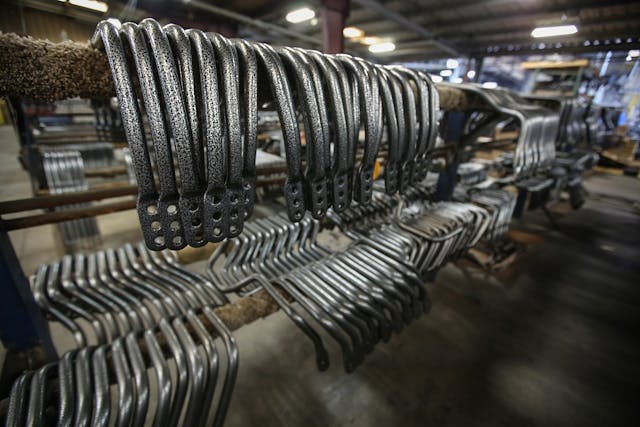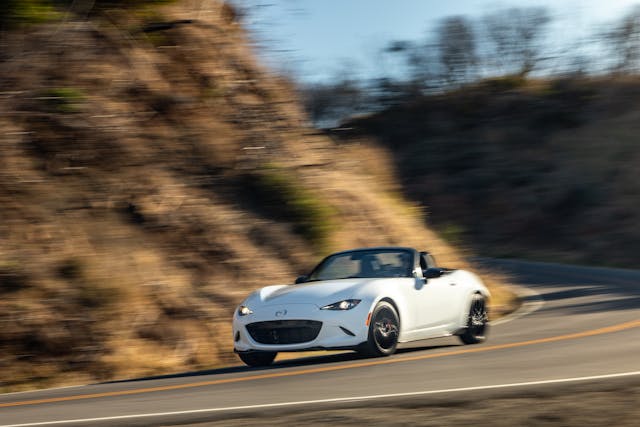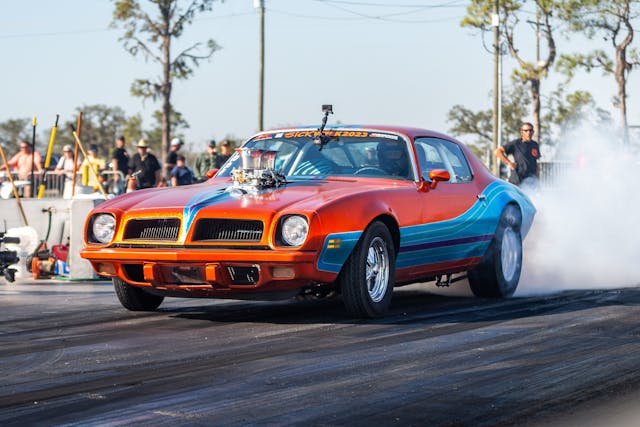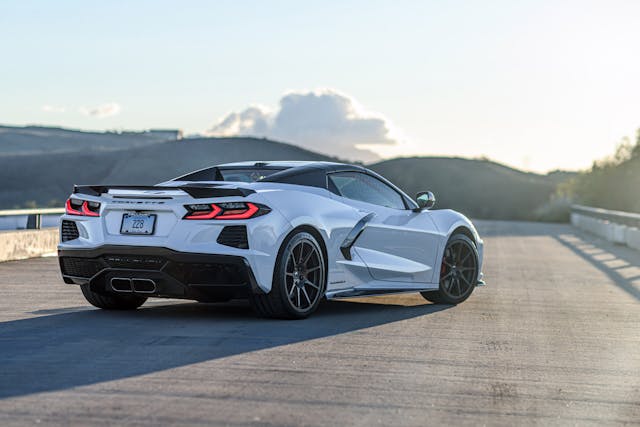10 automotive terms that muddy fact and fiction
This story originally ran on this site in November of 2019. It’s reproduced here, with minimal changes, as a riff on the same theme as this 2023 story examining the origins of the GMC name. That piece proved popular, telling us that you have an appetite for accuracy. Cheers to that! — Ed.
Considering how frequently I cringed during my decades as a technical editor at car magazines, it’s a wonder I didn’t develop a nervous tic. There’s a lot of misinformation and nonsense out there among non-experts who parrot certain phrases or terms, without really understanding what they mean. Here are my favorite cringe-worthy gaffes.
All-aluminum engines
I don’t believe any engine manufacturer has made a crankshaft out of aluminum. Same goes for piston rings, exhaust valves, and the fasteners tying everything together. I suspect this expression originated in England as lazy shorthand to describe an engine with an aluminum block and head(s).
Steel brakes
Brake rotors are made of cast iron or, in some cases, carbon-ceramic material which begins as a mix of carbon fibers bound with special resin. Cooking that blend for an extended period in a vacuum yields a ceramic material that’s excellent for stopping race cars and supercars. For more affordable cars, grey iron provides the best heat transfer while ductile iron’s higher strength is preferred for vented rotors. Motorcycles are a special case where stainless steel discs sacrifice some performance while avoiding unsightly rust caused by splashing through puddles.
Anti-sway or stabilizer bar

This transverse steel rod linked to your suspension system twists to resist body roll in turns. That’s why it’s most accurately called an anti-roll bar. Worried that you’d fret over your car tipping over, manufacturers coined meaningless alternative terms.
“Perfect” or “ideal” weight distribution
BMW and others would have you believe that 50:50 front-rear is the correct answer. Generally speaking, it’s not. Front-wheel-drive cars perform better with more than 50 percent of their weight carried by the front wheels and vice-versa for rear-wheel-drive rides. Cars with four-wheel drive have a more agile steering response with a rear bias. The ultimate balance depends on several factors: center of gravity height, polar moment of inertia, tire size stagger, and spring and damper rates, to cite a few. Supercars like Chevy’s mid-engine C8 Corvette, for example, typically carry roughly 65 percent of their weight on their rear tires to optimize acceleration, cornering, and braking performance.

Strength vs. Stiffness
Car parts that lack sufficient strength will fracture—as in actually crack or break in two. Ideally, that occurs only during severe collisions. Insufficient stiffness means that a suspension member, the body structure, or some other crucial part deflects too much under normal loading, impairing ride quality and handling precision. Every steering system component must be stiff to transport the subtle but useful feedback forces from the tire contact patches to the driver’s hands.
AWD vs. 4WD

This confusing construct was created to distinguish vehicles that employ four wheels for propulsion all the time from those with the means to manually engage a second drive axle when the road is slippery or non-existent. AWD can signify full-time four-wheel drive (such as most Audis and Subarus). Many modern AWD systems have intelligent controls that engage the second axle automatically and temporarily when slip is detected at the primary drive axle. Most AWD vehicles have a third center differential to accommodate the rotational speed differences that exist between the front and rear axles, though the extra diff isn’t needed with automatically engaging AWD.
4WD indicates part-time maximum traction (Jeep Wrangler), often used in vehicles where the driver can select 2WD or 4WD modes with a switch or a button. 4WD is a common feature of modern pickup trucks and heavy-duty SUVs.
Exemplary Aerodynamics
Carmakers love to tout low drag coefficient (Cd) figures to celebrate how readily their bullets pierce the wind. Lower is always better and any Cd below 0.30 is cause for popping a champagne cork. But before you begin swilling the bubbly, understand the rest of the equation. What really matters is drag area, the product of a car’s drag coefficient multiplied by its frontal area (CdA). In other words, a large slippery auto may perform no better than a tidier one with a higher drag coefficient.

Torque vs. Horsepower
This is an epic battle intensified by today’s onslaught of battery-electric cars. First, let’s distinguish between static and dynamic torques. Static torque is what you apply to your engine’s head bolts during a rebuild and is indicated by the dimensional units foot-pounds (or ft-lbs). To cinch the bolts at 100 ft-lbs, you apply 50 pounds of force to a two-foot-long wrench.
Dynamic torque is the rotating force that exits an engine’s crankshaft. The preferred units are pound-feet, lb-ft, or newton-meters if you’ve made the metric leap. When you see units misquoted as lb/ft by some witless writer, please pen a scathing letter to the editor.
Eighteenth-century inventor James Watt observed that a horse powering a sawmill needed one full minute to hoist a 33,000-pound load one foot upward. He defined that work as one horsepower. In his honor, the metric expression for work is kilowatt.

In the greater scheme of things, the amount of torque produced is proportional to the quantity of air flowing through the engine (or the size of an electric motor). The goal is maximum torque at the lowest rpm with the ability to sustain that output for as long as possible. The torque plot for a perfect engine or motor (none exist) would consist of a straight line from idle to the redline—the so-called “flat torque curve.”
Torque versus horsepower discussions inevitably devolve into a debate of which is better. The answer depends on your driving style. If you have an automatic transmission and you hesitate to downshift passing a car in traffic, you want right-now torque—the more the better. Any Tesla Model S or Chevy Bolt owner will spout chapter and verse about the instant torque they enjoy in daily driving. But if you’re a more aggressive driver who dwells at the upper half of the tachometer’s sweep, horsepower is your best friend. Your engine’s bottom range is merely for backing out of the garage. Your throttle is the trigger that unleashes more rpm and maximum power. Bottom line: torque is for painless tooling around, power is what gets you home in time for dinner.
Weight Transfer
Your car’s weight is a vector—a force proportional to its mass directed toward the center of the earth. Think W = mass x g, with g as the acceleration due to gravity. Your car’s mass permanently resides at its center of gravity (C of g), varying only in three specific instances. Its map coordinates change as you drive to work. And your car’s weight diminishes as you consume fuel or drop the kids off at school. During the body’s roll and pitch motion, the C of g also moves slightly from its static location.

What’s popularly (yet erroneously) known as weight transfer is more accurately described as load transfer. Drive around a corner and some of the load borne by the inside tires is “transferred” to the outboard tires. Step on the brake and the rear tires are unloaded while the front rubber is squished more firmly into the pavement. The opposite happens during acceleration. The amount of load transfer depends on the severity of the maneuver and the height of the car’s center of gravity which, as noted above, moves little during the tires’ tap dance on the pavement.
Where the rubber meets the road, dynamic forces point in three different directions. The share of the car’s weight a tire carries, diminished or augmented by load transfer, presses downward on the vertical axis. Increasing the vertical load applied to any tire increases traction—its ability to produce fore and aft and lateral forces. In the horizontal plane, the fore and aft axis represents the acceleration or braking force produced by the tire. Cornering forces reside in the horizontal plane on the lateral axis.

Venial sins of nomenclature
The term “crossover” was coined to describe a blend of car and truck components and traits. Like “wagon” and “SUV,” the crossover label has by now run out of gas. The same is true of import versus domestic ID tags. Given the car business’s world scope, distinguishing between a Ford Fiesta manufactured in Mexico and a Honda Accord made in Ohio is fruitless.
***
Check out the Hagerty Media homepage so you don’t miss a single story, or better yet, bookmark it. To get our best stories delivered right to your inbox, subscribe to our newsletters.



As an aforementioned witless writer, I can’t help but puzzle: why is lb/ft (mathematically considered ‘pounds per foot’ or ‘pounds divided by feet’) any more egregious than lb-ft (which witless readers could consider to be ‘pounds minus feet’ or ‘line backers per free throw’? Would love to see that on a dyno sheet.
I am not a farmer, but the tractor talk gives me an idea about to explain torque and horsepower. The torque to the drive wheels of a tractor will determine how wide of a plow I can pull. The horsepower will determine how many acres I can plow per hour. If I was a farmer I think that I would care about the latter more than anything.
Let me explain. With gearing, I can get any amount of torque to the drive wheels that I want. Let’s assume that I am not traction limited. The pulling force will be the drive wheel torque divided by the radius of the drive wheel in Ft to keep the units right. Notice that my Lb•Ft or Ft•Lb is now divided by Ft and I am left with Lbs of pulling force. If I want to pull a plow twice as wide I can just gear down by a factor of 2 to double my pulling force. But notice that all else being equal I am only going half the speed. Twice as wide of a plow at half the speed plows exactly the same number of acres per hour so I have gained nothing.
To plow the field faster I need more power (horse or otherwise) and let me try to explain why. Energy is force over a distance. If it takes 1000 Lbs of force to move the plow and I move the plow 1 Ft, then I have used 1000 Lb•Ft (or Ft•Lb) of energy. Power is the rate of energy transfer. If it takes me 2 second to pull the plow 1 ft then I am using 1000/2 or 500 Lb•Ft/s of power. If I want to plow the field twice as fast, I can either double the width of the plow which which doubles the force needed to pull it, or I can drive the tractor twice as fast. Either of these will double the power required.
So here’s the scathing letter to the author, not for using a / instead of a -, but rather not understanding the construct of a word. Watt is the unit of measurement of power. Kilowatt is merely watt modified kilo to mean 1,000 watts! Now am I to conclude with some insult to your character, as you imply we should do the / versus – offender?
“First, let’s distinguish between static and dynamic torques.” What? No. There is no such distinction; they’re the same thing. Foot-pounds and pound-feet are mathematically the same unit. (I did once have a physics professor who encouraged us to say “foot-pounds” when talking about mechanical work/energy [i.e. a horsepower is 500 ft-lb/s] and “pound-feet” when talking about torque, but that’s a different distinction entirely.) And the torque you apply to a bolt is the same as the torque your crankshaft applies to your transmission’s input shaft. The point this author probably should have made is that “torque vs. power” arguments are incredibly naive since horsepower and torque are mathematically related–if you give me torque and rpm I can tell you how much power your engine is producing, and if you give me power and rpm I can tell you how much torque your engine is producing. What you’re probably actually trying to argue about is whether you should shop for a car with an impressive *peak* torque value or an impressive *peak* horsepower value (when you should probably really be shopping for a car with the flattest torque curve). If you calculate the acceleration performance of a given car with a given engine and a given transmission in a real-world scenario, you’ll get the same solution whether you work from the torque curve or the power curve! If you don’t believe me, re-take Physics 101 (at which point you’ll probably find you can finish your homework faster if you work from the power curve, but that’s beside the point).
And this article’s treatment of weight distribution also leaves something to be desired. “Front-wheel-drive cars perform better with more than 50 percent of their weight carried by the front wheels and vice-versa for rear-wheel-drive rides” is true only if your definition of performance is limited to drag strips and snow-covered 4-way stops (i.e. it’s true of straight-line acceleration). The author is correct that handling dynamics depend on a variety of factors, some of them fairly nuanced, but if you’re just talking about front/rear weight distribution and your definition of performance is holistic, citing 50/50 as ideal *isn’t* wrong. (And I’m pretty sure the weight distribution of the C8 Corvette is more like 40/60 than the quoted 35/65–and I’d be willing to bet that its designers sought to get that CG as far forward as they could. That’s always the trade-off with a mid-engined car, and why there aren’t more of them out there; at the end of the day you get slight advantages in polar moment of inertia and height of the CG, but you end up with 55%+ of the weight on the rear wheels, while numerous front-engined cars, from Lancia Aurelia to C7 Corvette, achieve 50/50.)
Whoops; embarrassing typo: one horsepower is 550 ft-lb/sec, not 500.
Great post and I 100% agree except that I think that you meant that a horsepower is 550 ft•lb/s.
Question: What is a Joule per second?
Answer: Yes
The one I constantly hear is “frame off restoration”. The body sits on the frame (if the vehicle has a frame or chassis, or sub frame). So the type of restoration should be called “body off restoration”
That used to drive me nuts, too. I have noticed a few saying “off-frame,” which is more accurate.
This article and all the following comments are a perfect example of how one can go down the rabbit hole of the internet. However, it was very entertaining and educational.
I’d like to mention the common misuse of the term “JDM” to describe any car made by a Japanese manufacturer. The term actually is describing a car built for and sold in the Japanese market.
For example, your left-hand drive WRX purchased in the States does not qualify.
What–no mention of the term “one-off” ? The term actually is one-of—-as in one-of-a-kind.
OMG . I can’t take any more of this scientific talk. I have to go out now and get a pizza pie.